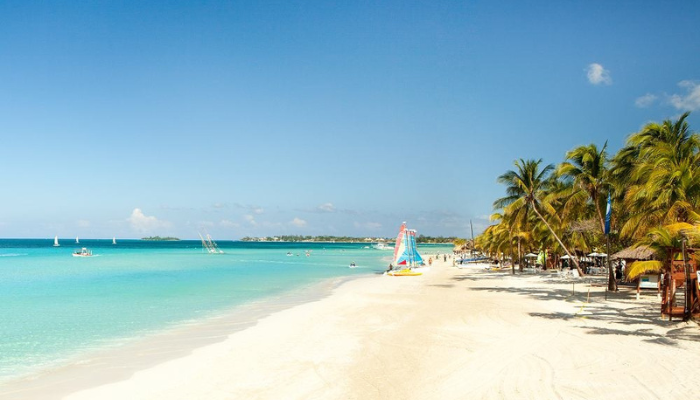
In February, a festival adds glamour to the Costa del Sol resort, providing a welcome tourism boost during the off-season
I’m currently in Torremolinos. I know what you’re thinking, and you’re not entirely wrong. However, I’m not here solely for the sun, affordable drinks, and English breakfasts, even though there’s an abundance of all three. My purpose is to relive my youthful days (albeit in a more mature manner) at the 30th Rockin’ Race Jamboree, an international rockabilly festival that electrifies Spain’s often-criticized resort for a wild weekend every February. This festival has significantly contributed to the town’s prosperity.
The Rockin’ Race was conceived by Guillermo Jiménez and Vivi Milla, a husband-and-wife team from nearby Málaga. They also operate a record shop and label in Málaga, both dedicated to American music from the 1950s and 1960s. Like many great festivals, it began in 1994 as a small gathering of friends who shared a passion for this music genre. Three years later, they outgrew their Málaga venue and eventually settled on Torremolinos, just 10 miles along the coast, as their new home.
It wasn’t the obvious choice. In the 1990s, London reigned as the vibrant hub of Europe’s rockabilly scene, alongside the famously hedonistic weekenders at British coastal holiday camps. Spain barely registered on the rock ‘n’ roll map, and some of its Costa del Sol seaside resorts were fading into disrepair. However, 30 years later, the rockabilly and vintage scene has exploded across the continent, with the Rockin’ Race Jamboree emerging as one of its premier festivals. Drawing over 5,000 visitors and featuring more than 40 bands and DJs from around the globe, the event has firmly established itself.
The festival is not only a highlight for rock ‘n’ roll enthusiasts but also a boon for the region’s tourism industry. The town’s mayor claims it provides a 40% boost to the local economy. Financial support for the event now comes from the Andalusian and Torremolinos authorities, EU funds, Iberia Airline, and the Costa del Sol tourist board. This support is not an anomaly; other Spanish regions have recognized the value of backing specialized music festivals to stimulate off-season travel. These include the mod/60s underground festival, The Euro Groovy Weekend in Gijón in January, High Rockabilly in Calafell in September, and the Funtastic Drácula Carnival in Benidorm in October/November—described as “three nights of demented garage punk.” As a British musician and former festival director, I find this level of support for popular music astonishing—and somewhat enviable.
“They’re the most welcoming guests we have all year, and they contribute significantly to the town’s economy. What else could you ask for?” – Ana, apartment manager
Festival attendees hail from around the globe, including Mexico, Japan, the US, and various parts of Europe. Similarly, the bands represent an international array. Over time, the Rockin’ Race has evolved beyond its rock ‘n’ roll origins to encompass swing, blues, R&B, honky-tonk, 60s beat, and garage music. Among my personal highlights this year were the Surfrajettes, a female surf group from Toronto, and the Po’ Ramblin Boys, a bluegrass band from Tennessee, whose electrifying, high-energy performance stole the show. Chris Magee of Bopflix Films, the event’s official videographer, has been capturing the essence of the Rockin’ Race each year. According to him, the festival has transformed from a niche gathering into a town-wide phenomenon.
Throughout the weekend, you’ll find small backstreet cafes and grocery shops blaring obscure Sun Records B-sides, while every taxi driver in town has crafted their own rockin’ playlist. Ana, the manager of the Buensol Apartments located at the heart of the festival, eagerly anticipates the event. “When I first learned about a rock ‘n’ roll festival coming to Torremolinos, I was apprehensive,” she remarked. “But they’re the most courteous, amiable people we encounter all year, and they significantly boost the town’s economy. What more could you ask for?”
It’s fitting that mid-century glamour has made a comeback in Torremolinos. The town’s tourism history is a complex one. In the 1950s, it emerged as a haven for celebrities seeking an alternative to the Côte d’Azur. Visits from icons like Rita Hayworth, Graham Greene, and Ava Gardner helped elevate this rustic Andalusian fishing village’s profile. During this period, the El Pez Espada, a striking modernist hotel, was built on the beach, attracting more celebrities, including Frank Sinatra and Brigitte Bardot. French tourists brought bikinis and introduced topless sunbathing. The word was out: Torremolinos became synonymous with bohemian luxury. In 1962, when two Londoners opened Tony’s, Spain’s first gay bar, Torremolinos further solidified its reputation as a safe haven for the LGBTQ+ community, despite homosexuality being illegal under Franco’s dictatorship.
Spanish coastal towns excel at reinventing themselves, and Torremolinos aims to emulate Málaga’s success
The rise and fall of Torremolinos are extensively chronicled in British tourism, epitomized by Monty Python’s 1972 Travel Agent sketch, which humorously portrayed the town as a symbol of cheap and unappealing package tour destinations.
Despite the abundance of traditional sun-bleached laminated menus featuring images of classic dishes like egg and chips, Spanish seaside resorts are adept at reinventing themselves. Torremolinos, in particular, has ambitious plans to emulate the successes of Málaga, Lanzarote, and Magaluf. This entails a multimillion-euro regeneration scheme, much of which focuses on celebrating the town’s decadent past and its increasing popularity among LGBTQ+ tourists. Torremolinos is considered the birthplace of Spain’s gay rights movement.
After years of obscurity, it appears that Torremolinos is once again embracing its “degenerate” reputation. The revival of the town, in part due to the Rockin’ Race festival, signals a return to prosperity and vibrant times.



